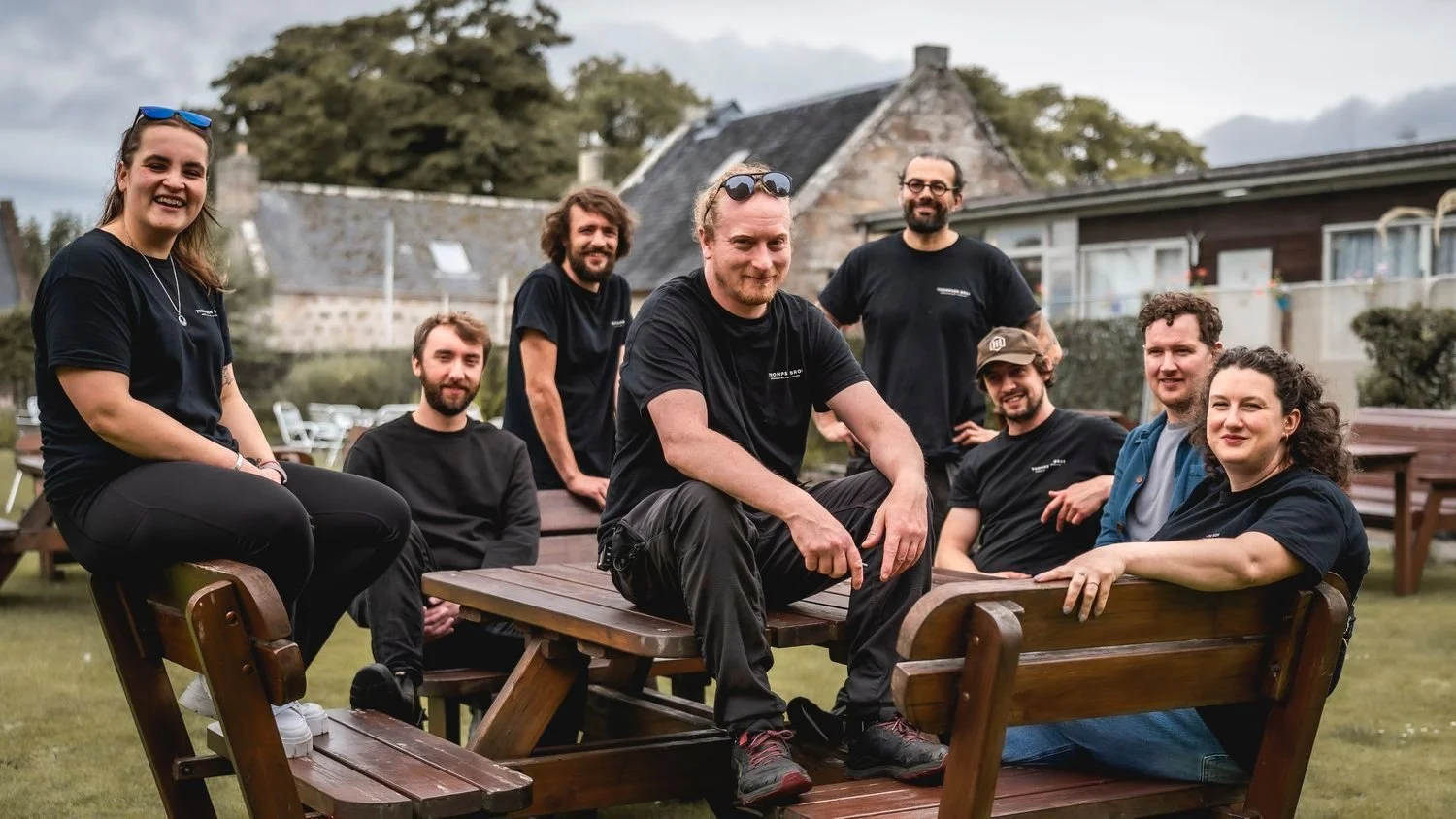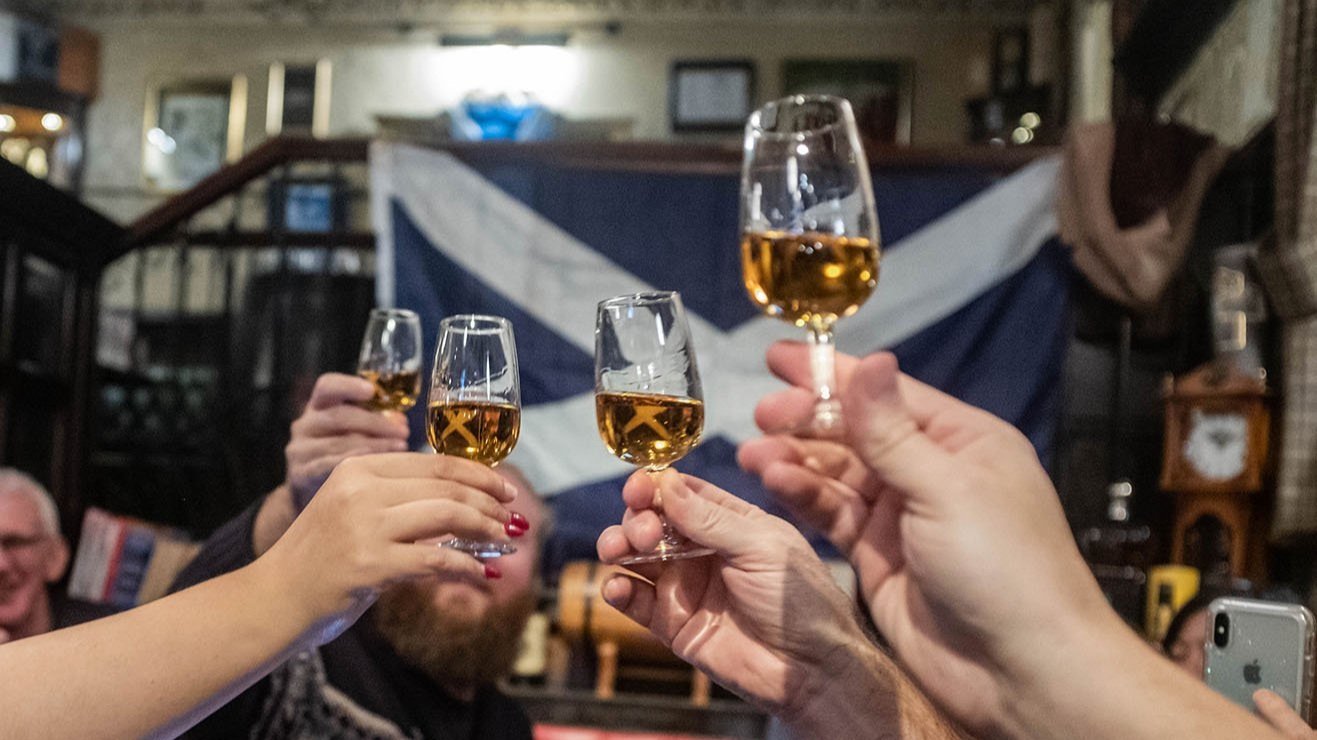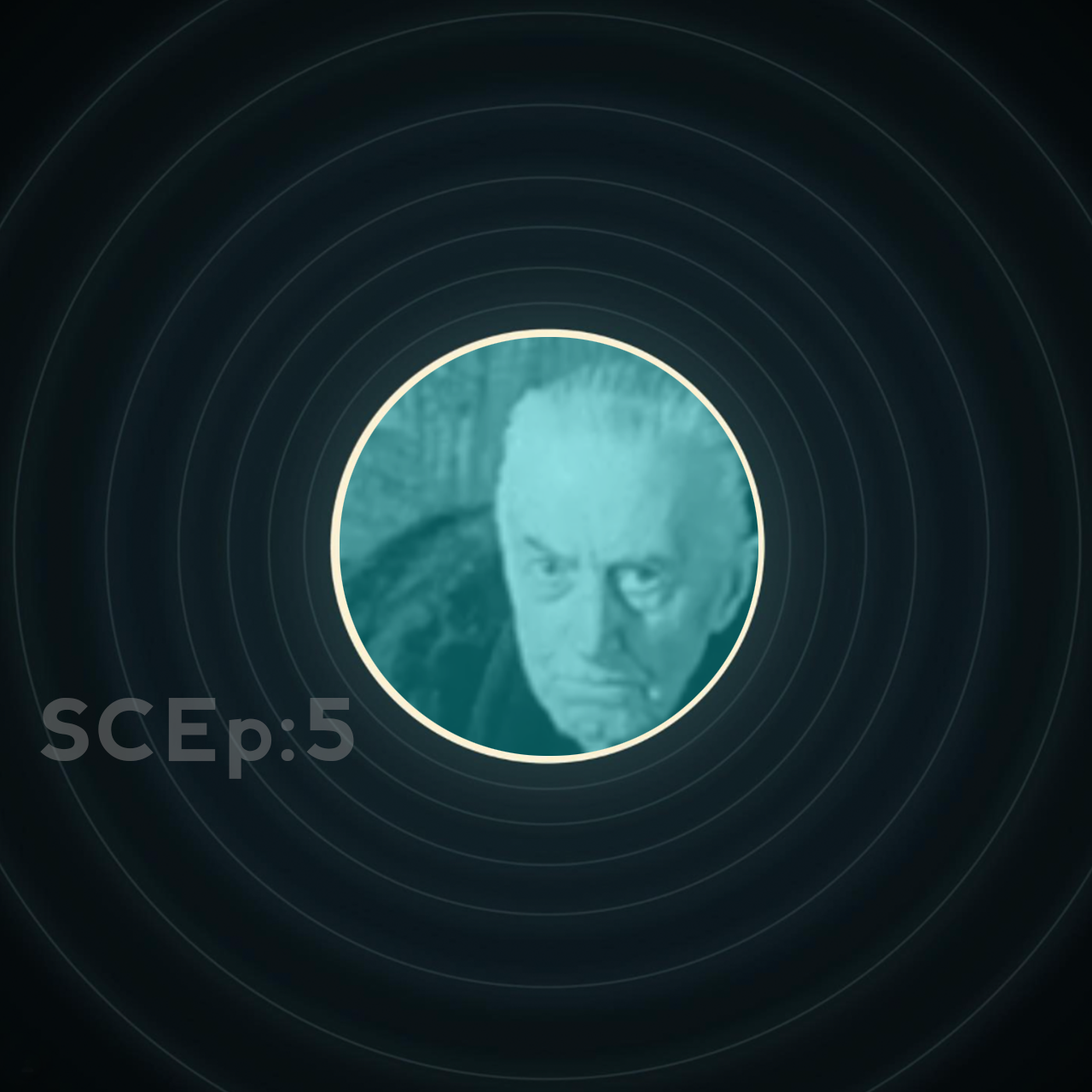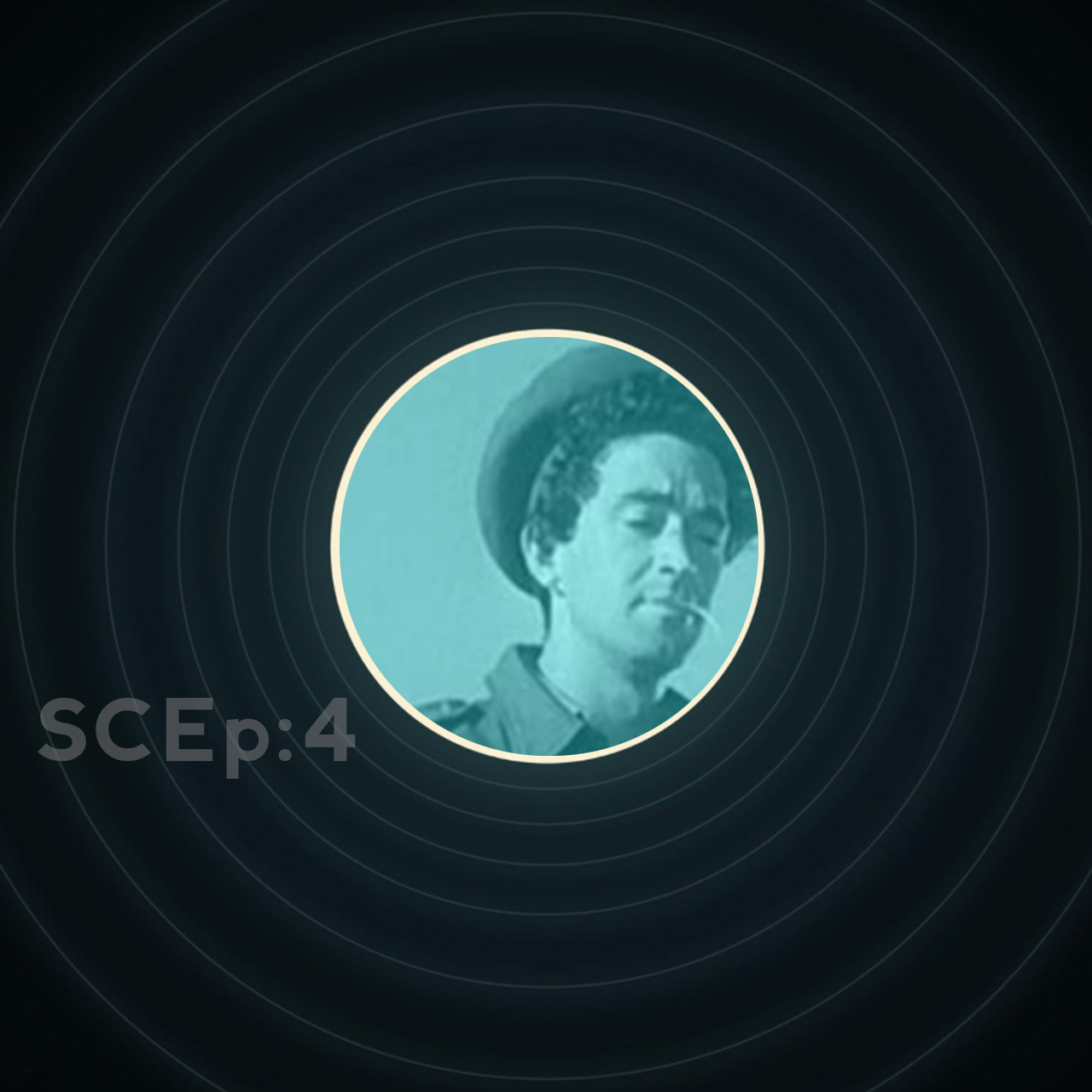Glenglassaugh Portsoy
NAS Official Bottling | 49.1% ABV
Score: 7/10
Very Good Indeed.
TL;DR
Really good, but not quite good enough to have me forking out for a visit
Where to next?
Thank you to everyone who read my Dramface debut article, it was a lovely welcome. By now you’ll know I am quite partial to a distillery tour given half a chance, so when I decided to write about a dram hailing from North East-based Glenglassaugh distillery, I naturally set my cap in that direction, rubbing my hands together as I zipped over to my laptop to check out the specs, plotting for the next opportunity to take another whisky trip up north.
Alas it did not bode well when the drop-down menu on their polished-looking website made nary mention of a tour. A deeper dive into the hidden depths of their serene wave-washed, gorse strewn web frontage was required. This unearthed an offer of the chance to “walk through the footprint of the original distillery” and “gaze at the two perfectly polished copper stills” for the not-so-bargain price of just short of a ton of your best GBPs: £95!
A deep intake and whooshing out of the breath follows; which, just to be clear, is unfortunately not the result of the calming ambience of their site’s coastal imagery. Perhaps there are sound and practical reasons for this pricing that I am unaware of, such as not being set up to accommodate a large influx of visitors, and preferring to keep the footfall to a minimum. Still, I can’t deny feeling more than a touch crestfallen.
Trying and potentially falling for the whisky from a particular distillery, is to my mind like opening a door, or an invitation if you will. I immediately want to know more about where that amber liquid was made, and what goes into its make-up – I want to meet and talk to the people who make it if possible, peer into mash tuns and washbacks or, if I’m lucky, scent the air in a dunnage warehouse.
Reading up online can take you so far, but a visit to the distillery itself is usually something special, and helps create a tangible and perhaps even lifelong connection to a brand. This website experience, while it feels like a fresh baked warm invite to North East shores, comes with a salty side serving of ‘door slammed in yer face’ in terms of access to the distillery itself – yes it’s open, but only to the (fortunate) few.
Discussing this with a fellow Dramface pundit, I learned that basically any distilleries built prior to the opening of Arran’s Lochranza circa 1995, did not factor tourism into their plans, focusing purely on production. So perhaps my annoyance needs to be tempered a bit by this fact, and some consideration should be given to perhaps a sense of entitlement that, from our 2024 viewpoint, makes us feel that we should always be able to visit our favoured drams at their source.
While Visitor Centres and facilities are to be encouraged, cost is surely a major factor – it puts me in mind of a chat with the guide on a recent visit to the newly established Kingsbarns Distillery, who apologised for the winding and slightly bumpy track leading from the road to the on-site car park. If memory serves, they had to wait to get this upgraded and properly tarmacked, due to an estimated cost of over a million quid (which also begs the question whether I’m in the wrong business - there’s apparently gold in them roads).
Perhaps a more open and transparent approach is needed then, revealing whether plans are in place to eventually provide facilities to cater to a broader footfall, and - whether or not - ensuring at the very least that if premium priced options are the only ones on offer, a fittingly perk-laden experience is being provided, rather than (as sounds like the case here) a rather basic tour of the facilities, catering for those willing and able to cough up that much dough for the “opportunity”.
We see the same obfuscation happening behind the rather exclusive doors of Brora and Port Ellen, where the leading messages upon the whisky wires is that it’s an entry-level price of hundreds of pounds and upwards, just to tour. There may be a more egalitarian plan in place for the future, but currently this is very unclear. They could do with taking a leaf from the book of Rosebank, where the tiered tours are clearly set out, if a little on the pricey side. Still, at least we know some nice drams are being provided.
Is this too much to ask? Isn’t this what’s on everyone’s mind as they wander around a distillery? How long am I here? What drams will they offer me afterwards? Certainly true for me if I were to wander around these ‘phoenix’ distilleries.
In any case, if these ‘exclusive’ brands can be said to have built much of their current success on the back of support from enthusiasts like ourselves, then why does it feel like we’re being excluded from their subsequent rebirths?
Anyway, now it’s time to take some genuine calming breaths, and remind myself that we’re here to talk about the whisky.
Glenglassaugh is technically considered a Highland whisky, sitting as it does just out with the Speyside region geographically-speaking, and, it’s said, with a rounder, slightly harsher flavour profile when compared with Speyside’s generally more honeyed and gentle offerings.
A little history for those, like me, who don’t already know this particular phoenix-from-the-flames story (and if you do, I give you full permission to skip forwards a couple of paragraphs!). Dating back to 1875, when it was established by local grocer and entrepreneur James Moir and his nephews, Glenglassaugh distillery is tidily located between Sandend and Portsoy. The site was selected based on its proximity to the pure water supply provided by nearby Glassaugh spring, which is situated on Durne Hill overlooking the distillery, as well as access to the neighbouring barley fields; the area’s history of illicit spirit manufacturing also apparently played its part.
Acquired in 1892 by Highland Distillers, Glenglassaugh was forced to cease production in 1907 following the downturn in the popularity of Scotch whisky, and experienced a 53-year period of dormancy, interspersed with a relatively brief periods of operation in the ‘30s and again in 1960, after which it became a casualty of the 1980s excess of inventory famously dubbed the “Whisky Loch”, closing its doors again in 1986.
Whilst many assumed the distillery would never reopen its doors again, it was eventually sold to Stewart Galbraith Distillers Ltd (later retitled The Glenglassaugh Distillery Company) on behalf of Scaent Group, and resumed operations in 2008. A couple more changes of hands took place, when in 2013 it was bought by Billy Walker’s BenRiach Distillery Co. and then sold to current owners Brown Forman in 2016.
In a bold move aimed at sustaining operations until such time as its Scotch could age properly, Glenglassaugh released early experimental, new-make and no age statement spirits, produced using the same techniques used in making single malt, but without the ageing process: The Spirit Drink That Dare Not Speak Its Name and The Spirit Drink That Blushes To Speak Its Name. The success of this approach meant that the brand turned a profit just three years after reopening, following which it released its core Scotch whisky range including Glenglassaugh Revival, Evolution, and Torfa, now discontinued but still available here and there.
Not one to rest on its laurels, June 2023 saw a major rebrand for the company, in which it overhauled its previous portfolio and launched a brand spanking new core collection, featuring three new single malt releases, all created under the expert hand of master blender Rachel Barrie - their flagship 12 year old, Sandend and Portsoy - and sporting an eye-catching new ripple effect glass bottle, inspired by the rippling sand tides at Sandend Bay.
You can read Tyree’s take on all three here, but Dramface’s embracing of multiple opinions on all things whisky means I was encouraged to share my own thoughts on this particular Portsoy expression.
My first purchase from the distillery was their 12yo, acquired soon after its release last summer and, as memory serves, I was impressed; matured in a combination of bourbon, sherry and red-wine casks, and bottled at 45% ABV, it was a blind buy, but one which I thankfully didn’t regret.
Long finished now alas, I can’t give a current review or comparison, but from the notes Is took, I nosed bright tropical fruits and berries, rich sherry-soaked dried fruits, oak and vanilla to taste, and a creamy mouthfeel, with a moreish saltiness and kick of spice to finish.
So how about this Portsoy?
Review
Glenglassaugh Portsoy 2023, NAS, lightly peated, matured in a mix of sherry, bourbon and port casks, 49.1% ABV
£55 and wide availability
Score: 7/10
Very Good Indeed.
TL;DR
Really good, but not quite good enough to have me forking out for a visit
Nose
Right out of the starting blocks I get salty coastal air notes, floating atop a tropical and barbecue-glazed pineapple breeze. I can literally taste salt on the front of my tongue just from a good waft of this under the nose.
The tropical note brings a very slightly smoky BBQ flavour along for the ride, and repeat forays deliver a Cadbury’s dairy milk note. I also get some of that Port cask influence coming through, in the form of black grapes and dark sweet cherries.
If that umami, sweet-salty thing is your bag, then at this point you will likely be salivating for a taste of this dram, like I am right now …
Palate
Full bodied warmth and smoky bonfire highland peat come through first for me, but in a tantalising rather than an overpowering way; the website and label described it as “richly peated”, but to me lightly peated is a more accurate description of the experience. This is followed immediately by salted dark treacle, soy sauce and warming candied ginger. Black pepper adds some extra spice to the mix, with dark cherry jam and cacao nibs for the finale.
The finish for me is on the medium to short side, although the warmth lingers pleasantly for a while in the throat. There’s a light-handed breezy feel here overall, delivered by the nose and shorter finish, which I feel balances things nicely, whilst still allowing for that interesting flavour profile to come through, making it a dram which I would likely reach for in all seasons and weathers (which is handy if you live in Scotland like me).
The Dregs
I like this one - I like it a lot. Working on memory alone, I think it exceeds my experience of the 12 year old, which was pretty good in itself, and I would love to do a side-by-side tasting of these two, along with Sandend, when I get the chance.
There’s an unabashed salty sweet umami-ness to this smoky peated dram, which it seems to me makes the absolute most of those coastal elements which its location inspires. And the generous 49.1% ABV, oddly specific number though it might be, I think adds to the flavour profile on offer here (the 12 year old comes in at a more moderate 45%, while the Sandend release bodes well at a similarly high 50.5%).
On the minus side, we have no mention on the bottle label of its being non-chill filtered or naturally coloured, which is a shame. The website doesn’t provide further information either on the PPM rating for the barley, although it describes Portsoy as a “richly peated” dram.
I’m giving this a solid 7 out of 10 Dramface rating. For the price I think this dram really is very good indeed, and I don’t hesitate to recommend it, if the flavour profile sounds up your proverbial whisky street.
A delicious blend of sweet smoky peat and coastal, salty umami that speaks of its location. Which will need to do until I can afford to visit.
Score: 7/10
Tried this? Share your thoughts in the comments below. PMc
-
Dramface is free.
Its fierce independence and community-focused content is funded by that same community. We don’t do ads, sponsorships or paid-for content. If you like what we do you can support us by becoming a Dramface member for the price of a magazine.
However, if you’ve found a particular article valuable, you also have the option to make a direct donation to the writer, here: buy me a dram - you’d make their day. Thank you.
For more on Dramface and our funding read our about page here.
Other opinions on this:
Got a link to a reliable review? Tell us.














































